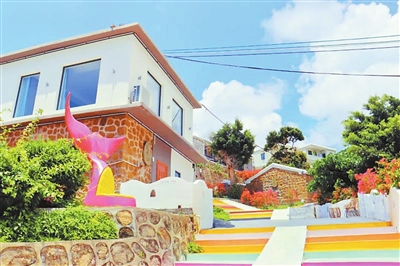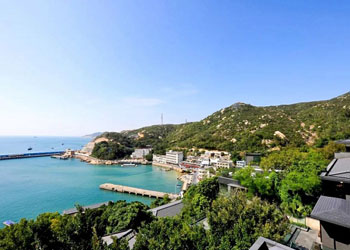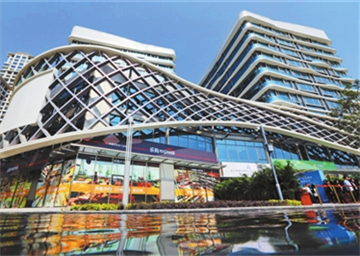Wanshan islands: a bright spot for Golden Week tourism
Despite recent COVID-19 outbreaks elsewhere, Wanshan Archipelago islands received 41,200 visitors during the Oct 1-6 Golden Week and generated tourism revenue of 30 million yuan ($4.65 million).
The year-on-year increase of 13 percent is attributed to a gradual buildup of island tourism, strong promotions, and new accommodations, attractions, and access. Zhuhai as a whole, however, saw tourist numbers drop 18.28 percent from the same Golden Week in 2020.
Among recently added attractions, Honeymoon (Miyue) Park on northwestern Dong'ao Island entertained visitors with a stylish wedding hall, coastal and forest boardwalks, hiking trails, and the newly restored Honeymoon Pavilion.

Island guesthouse [Photo by Peng Meiyuan to Zhuhai Daily]
Meanwhile, Yiwan Beach on Guishan Island offered canoeing and kayaking, stand-up paddle boarding, and sailing watersports. Seafood Street vended Guishan clams, Wanshan golden pompanos, mantis shrimp, and groupers.
Wailingding Island wooed tourists with newly added hiking trails, a pavilion for watching sunrises, and lighting effects.
In all, 24,500 overnighters visited Wanshan Archipelago islands, up 31.2 percent from the same period last year. Characteristic B&Bs such as Blue Coast, ToHome The Jade & The Tree, academy-themed inn Haixing Mumian Yaju, and Granite Cottage were fully booked one month prior to the National Day holiday.
The Zhuhai Transport Bureau reports that 901,000 travelers visited the city during Golden Week. Of them, 56,500 traveled by car or bus (down 55 percent year-on-year), 179,000 by boat (decrease of 7.74 percent), 175,800 by plane (30.34 percent fewer), and 489,700 by intercity railways (less 7.7 percent).
Nonetheless, Zhuhai Public Transportation Group had deployed more buses and sightseeing buses to major scenic spots during the holiday. Oct 1-3 also being public days at the China International Aviation & Aerospace Exhibition near Zhuhai (Jinwan) Airport, municipal transport, public security, and health authorities enforced strict anti-epidemic measures on inbound travelers such as body temperature measurement, health code and travel history verification, and nucleic acid testing.



